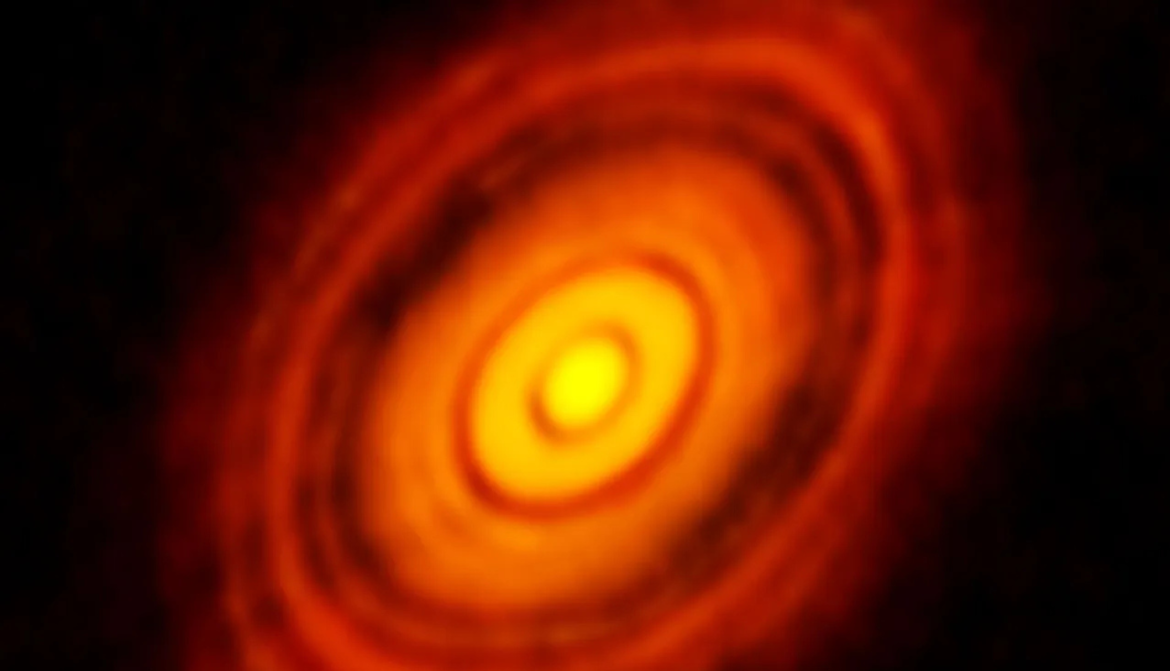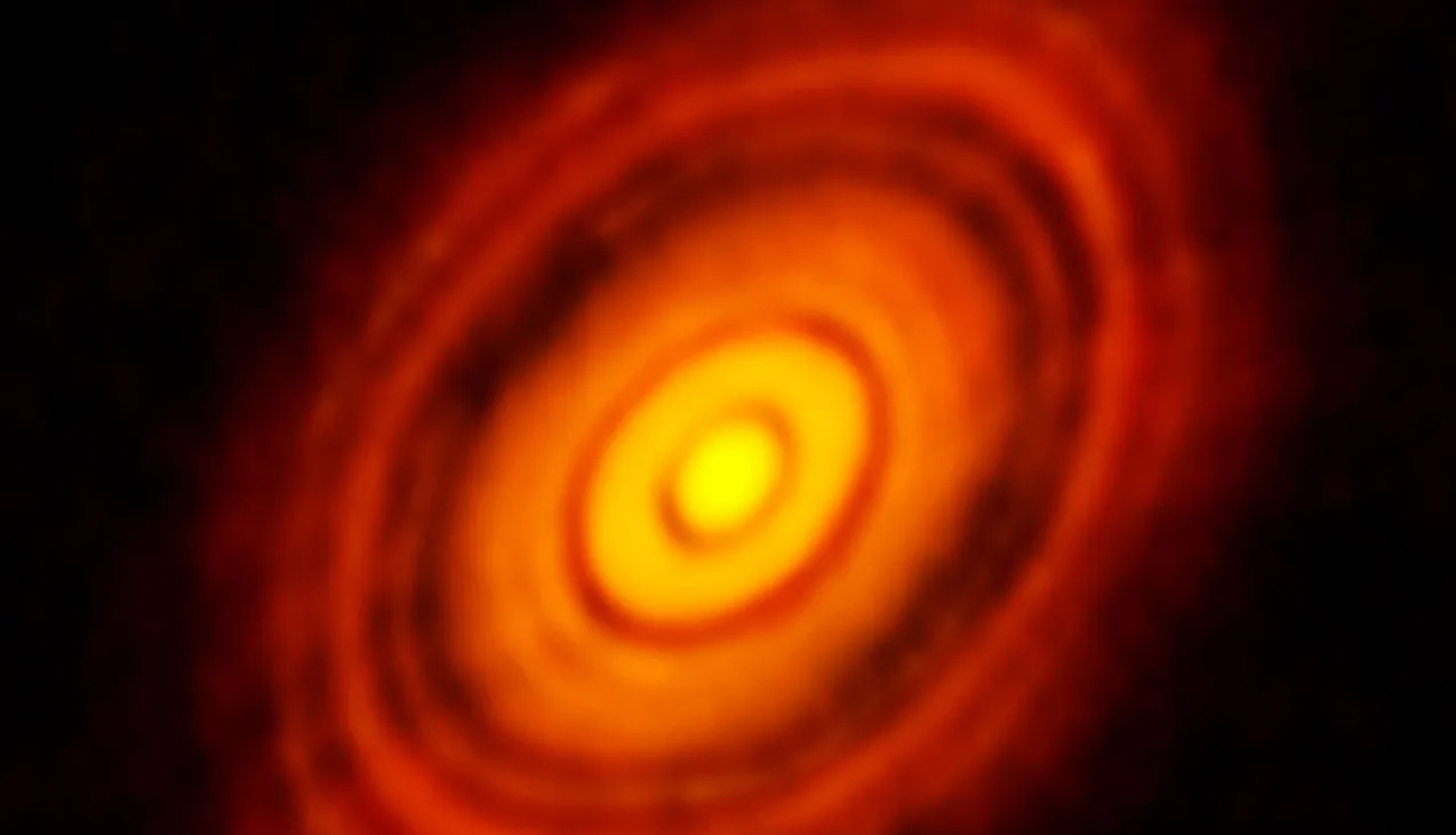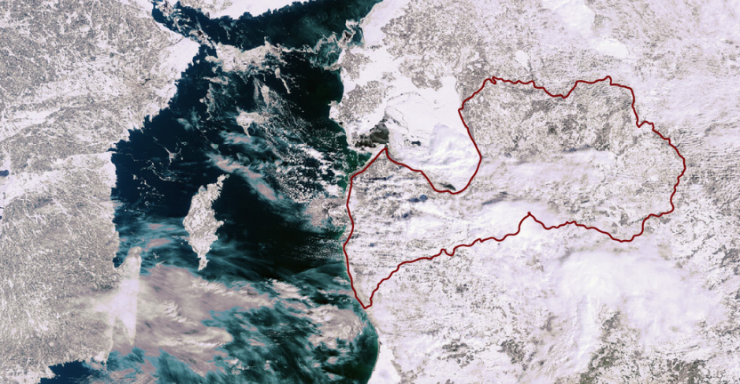The planets of the Solar System formed from fine interstellar dust particles. As the interstellar cloud (which would later become the Solar System) contracted, these dust grains gradually stuck together, growing larger and larger. As this process continued in the disk around the proto-Sun, they grew to the size of sand grains, peas, and beans. Eventually, the “dust” of flying, mountain-sized objects continued to grow by attracting more material through their own gravity.

Dust in the planet-forming disk of the protostar HL Tauri. ALMA (ESO/NAOJ/NRAO).
Frost formation—ices of various volatile substances condensing onto the surface of the dust grains—played a significant role in their sticking together. The substances forming the frost are also well known here on Earth. They include water, methane (natural gas), carbon monoxide, carbon dioxide, methanol (wood alcohol), and ammonia (also known as smelling salts). Frosted dust grains were stickier and more easily adhered when they collided. The clumping of dust was the first step in the process of planet formation that occurred in the disk around the proto-Sun. Although each grain of dust was minuscule—less than a thousandth of a millimetre in size—their total number in the proto-Solar cloud reached at least several quattuordecillion (10^45), and their combined mass was approximately ten times that of Jupiter. Anything that happened to these grains was significant for the planet formation process.
“Although each grain of dust was minuscule—less than a thousandth of a millimetre—their total number in the proto-Solar cloud reached at least several quattuordecillion (10^45), and their combined mass was about ten Jupiters,” revealed Juris Kalvāns, lead researcher at the Ventspils International Radio Astronomy Centre.
In a recent theoretical study, Juris Kalvāns discovered that not all grains were equally frosted. More precisely, the frost they had uniformly acquired in the interstellar medium became redistributed near the proto-Sun only onto the coldest grains. This migration of ice molecules was driven by the grains’ different sizes and chemical compositions, which caused them to be heated to varying temperatures by radiation from the proto-Sun. On some grains, the frost would sublimate, only to re-condense onto others that remained sufficiently cool. During intense radiation bursts from the proto-Sun, frost would evaporate from all grains. Such periods could last from a few years to several centuries. As soon as such a period ended, the grains cooled, and frost would once again form only on the coldest grains, leaving the rest bare.
This is the essence of the discovery: in the disk, ice concentrated only on about 10%—or perhaps just 1%—of the coldest specific types of grains. These grew excessively large and, as micron-sized “giants,” floated among the tiny, warmer grains that could easily stick to their thick frost. In this way, grain growth proceeded faster than it would have by similar-sized grains sticking together. Thus, the subtle “settling of scores” between tiny molecules and grains in the proto-Solar cloud and disk could have had a large-scale effect—a rapid onset of planet formation. Determining whether and how this happened is a task for further theoretical simulations and experiments.
Link to the study published in the journal Astronomy & Astrophysics
The research was carried out within the project “Desorption of Ice Molecules in the Interstellar Medium (DIMD),” funded by the Latvian Science Council, project No. lzp-2021/1-0076.


